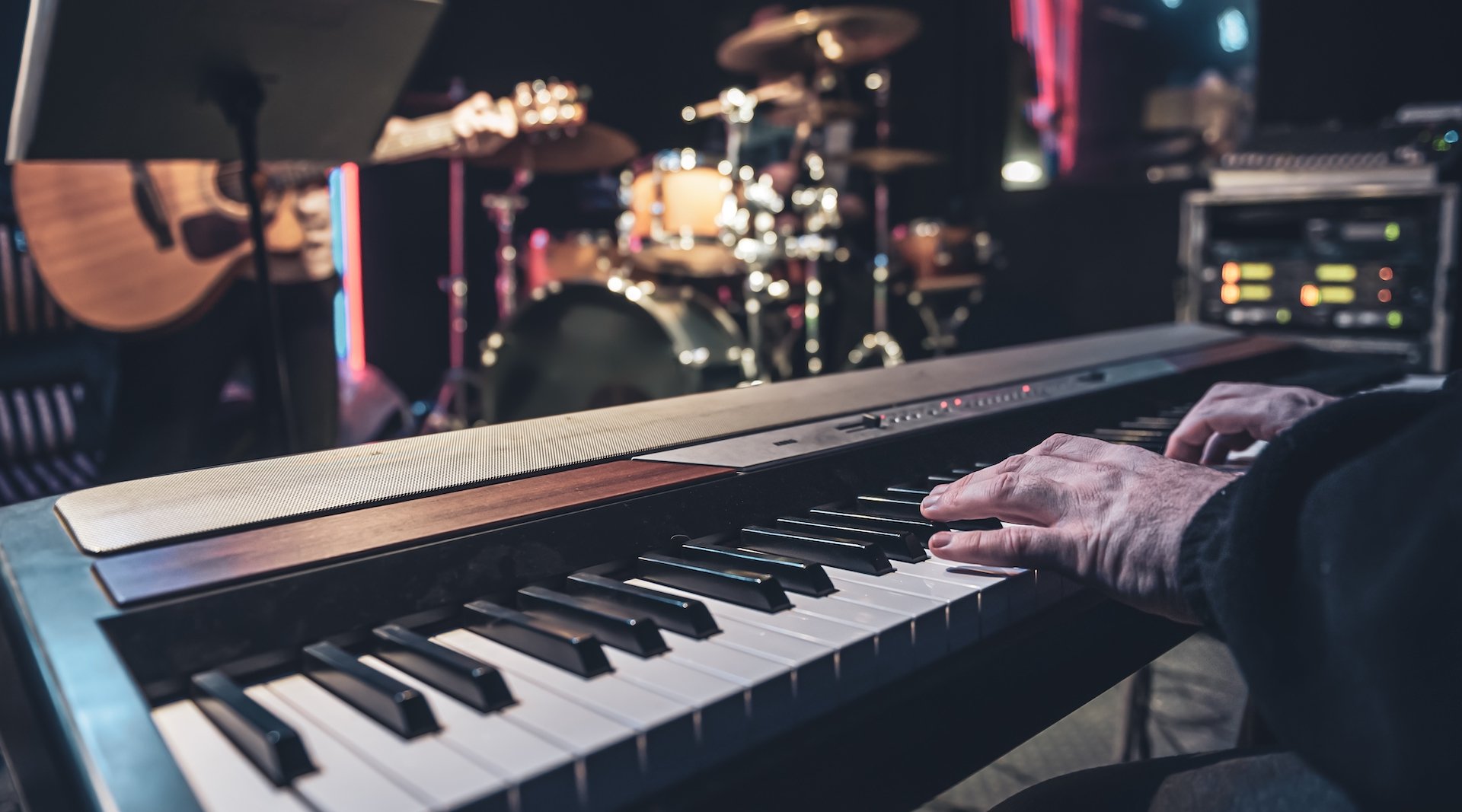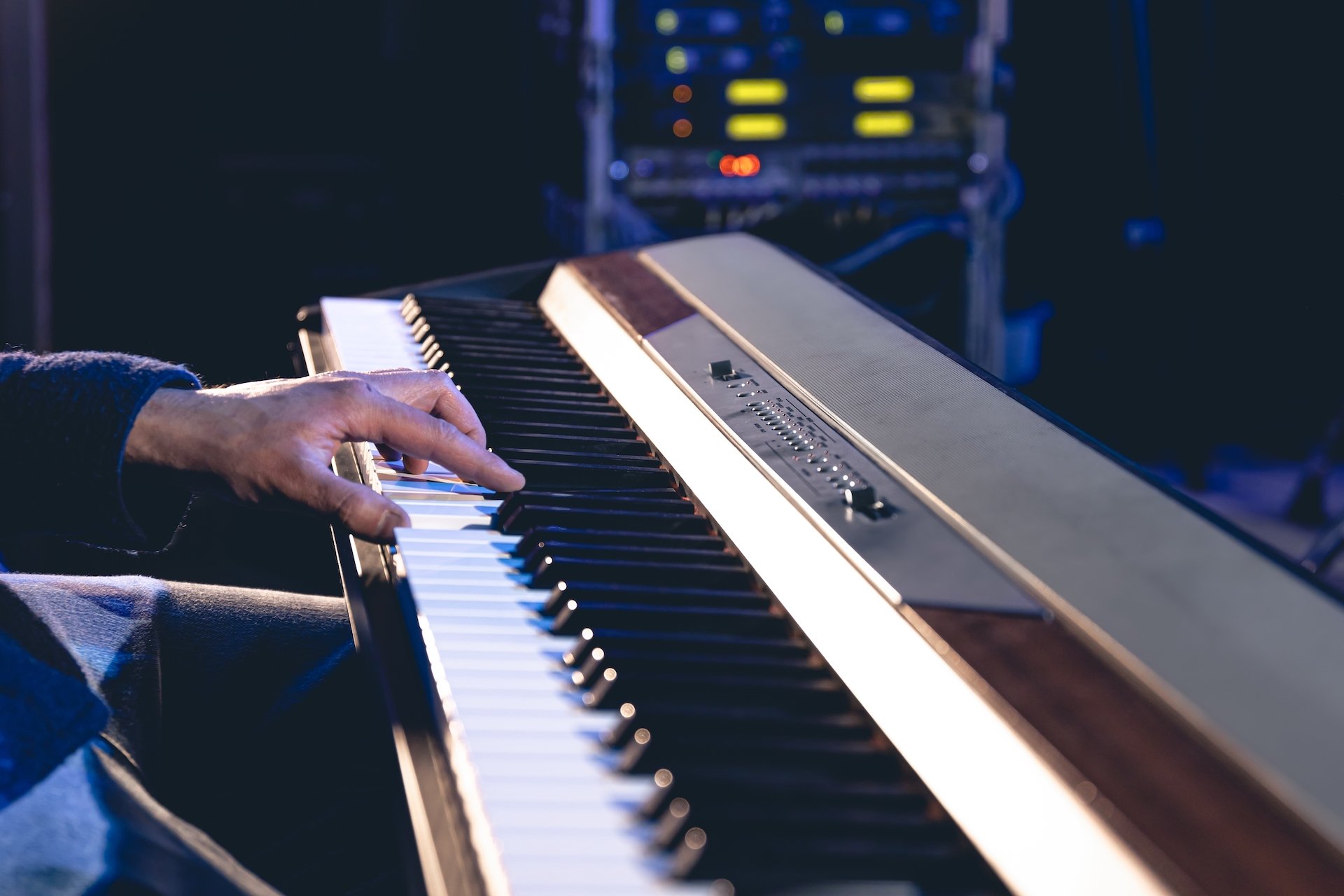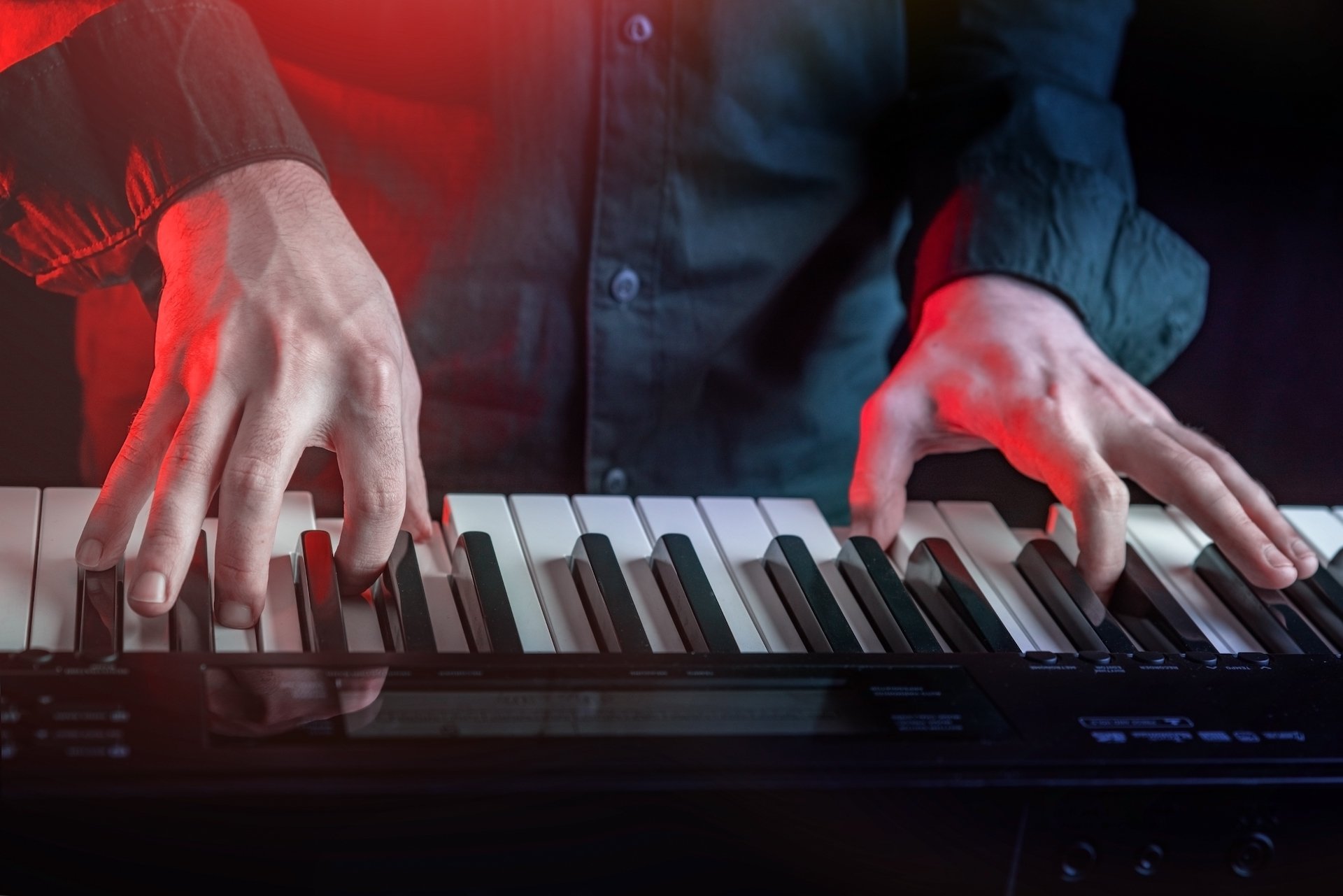The difference between a digital piano, a keyboard and a stage piano
- The digital piano (or electronic piano) is mainly used at home and is designed to mimic the sound and feel of playing an acoustic piano as closely as possible. A digital piano with a dynamic keyboard is an ideal tool for acquiring piano skills.
- Thanks to its simplicity, the keyboard is the ideal introduction to the creative world of keyboard instruments. It can play both melody and music at the same time, and thanks to the built-in sound process, it offers a number of functions such as arpeggio, drum rhythms, automatic chords and effects such as reverb, delay or equalizer.
- A Stage piano (or digital stage piano) is designed mainly for live performances on stage and work in the studio, but it can also be suitable for home use. The shape, dimensions and weight resemble a keyboard rather than a digital piano. A Stage piano is a popular choice for professional keyboard players thanks to its ease and convenience of transport. Unlike a keyboard, however, a stage piano does not usually have a built-in speaker with the exception of a few models. Instead of speakers, most models have outputs for connection to a stage sound system or keyboard combo, and headphones can also be connected for home use.

Keyboard
Most stage pianos have a dynamic keyboard with a fully balanced or semi-balanced hammer mechanism. This means that the keys can respond to the intensity of the press with the same response as an acoustic piano. Each manufacturer uses its own label for balanced key technology, for individual products we come across names such as Hammer Action, Graded Hammer Action, etc.
Sound
The built-in processor can simulate a wide range of sounds - from various pianos, organs, string instruments and guitars to percussion instruments or voices.
Control
In addition to the keyboard, they possess the highest quality stage pianos with an array of buttons, control buttons, indicators and digital screens. This portable sound studio can respond quickly to selected sound settings. The convenient control of functions during live performances are a great extra benefit. These include options such as switching the sound of a split keyboard, changing the background music in a chorus or style, softening the tone when releasing a key, assigning registers to a split keyboard, arranging the interface, reprogramming keys to activate backgrounds or various effects and creating sound synthesis. More sophisticated models also offer programs that can be used to export individual sounds to a computer for further editing. Most stage pianos also have the ability to function as a MIDI controller that can control and mix music from a computer.
Effects
Effect sections of higher series instruments allow, (in addition to basic effects such as delay, reverb, pitch shift, independent control of oscillators and filters) effects such as pan, tremolo, wah-wah, glanger, chorus and phaser. You can also find the simulation of some types of amplifiers or rotating speakers, compressor or tri-band equalizer.
Accessories
The basic accessories of every stage piano should be a quality stand, chair, headphones and a transport case, whether a hard case or dust cover. A discounted set can be a practical solution as it already contains some accessory components. A suitable foot pedal or cable for instruments will certainly be of use. Studio monitors may be useful when working in a recording studio. Every professional musician knows how important it is to have your own sound under perfect control during a live performance, so it pays to use a keyboard combo on stage.

Summary
The Stage piano is intended for advanced players who perform live or take part in studio recording. The dynamic keyboard, larger range of keys, and the possibility to connect headphones also make it suitable for home exercise. It offers sophisticated sound options, effects, and controls, while being easily portable thanks to its low weight and compact dimensions. It has simple and clear controls.
 Musical Instruments
Musical Instruments

 Water Sports
Water Sports


 Sport
Sport


 lt
lt



